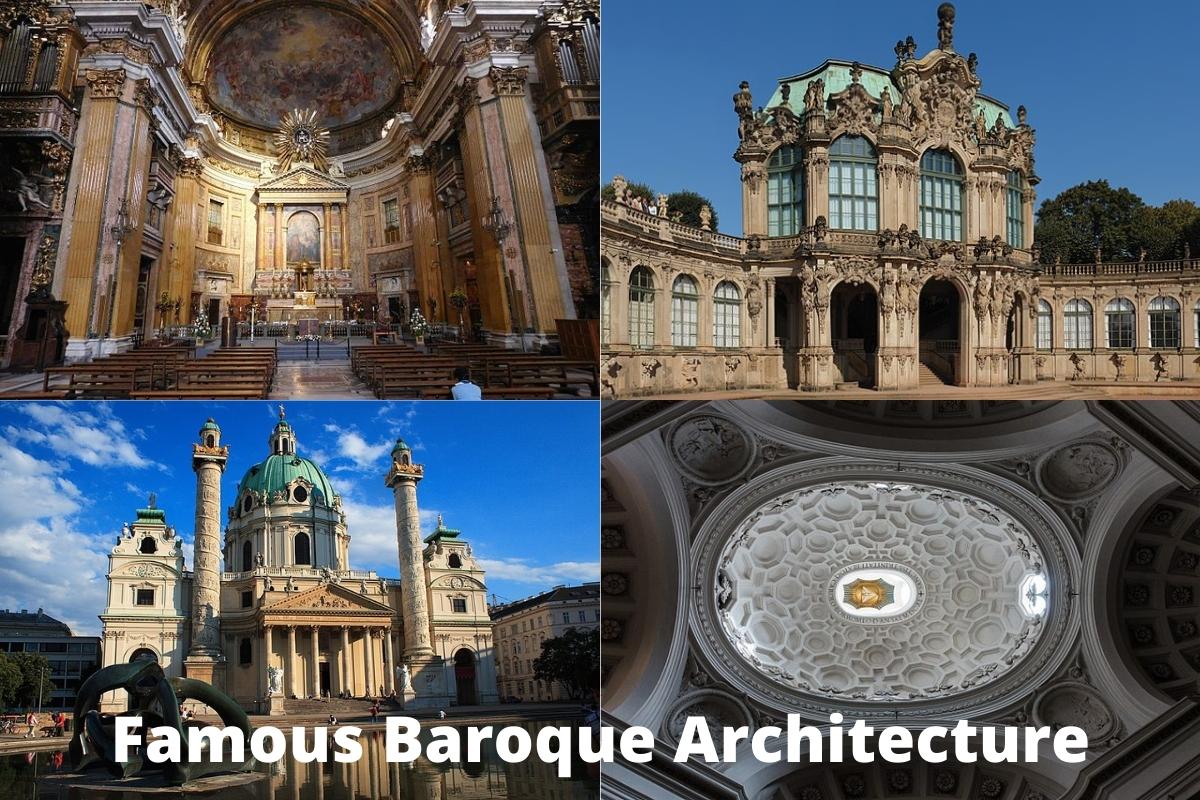Baroque architecture is a prominent style that emerged in Europe during the late 16th century.
It sprang out of the latter years of the Italian Renaissance era and was heavily influenced by theatrical performance and how the many different designs and colors appeared in certain lighting elements.
Today, many of the most famous baroque structures that are still standing throughout Europe are among the most-visited in the continent.
In this article, we will outline 10 of the most famous baroque architecture buildings and examine the architects and designers behind each work, as well as the purpose of the structure.
Famous Baroque Architecture
1. San Carlo alle Quattro Fontane
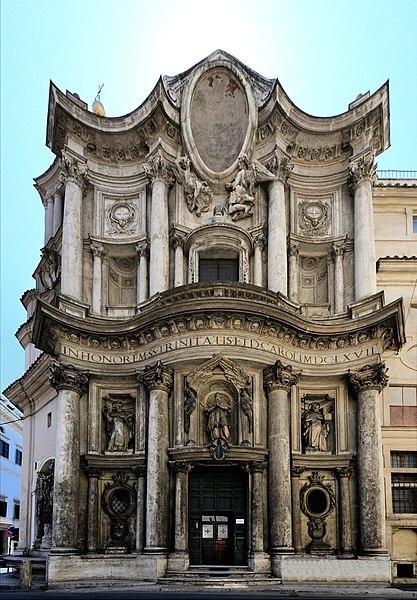
One of the most notable churches in the city of Rome, Italy is known as the San Carlo alle Quattro Fontane, which translates in English to “Saint Charles at the Four Fountains.”
This building was constructed during the height of the baroque period and its rise across Italy and the vast regions of Europe within a few decades.
The church was designed by Francesco Borromini, who was an Italian architect who is recorded as being one of the leading figures in the baroque movement.
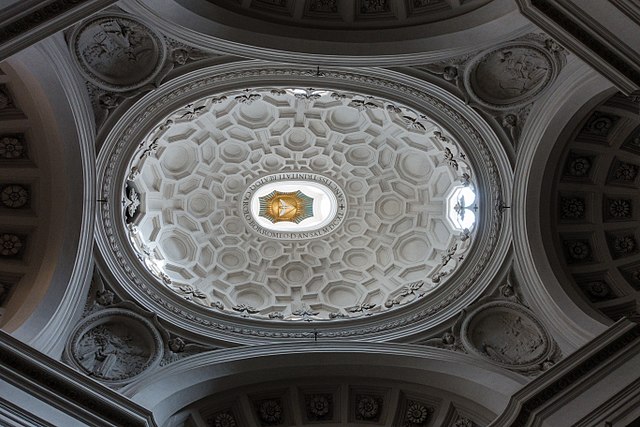
Construction on the San Carlo alle Quattro Fontane began in the 1630’s after Borromini was commissioned by monks of the Trinitarian Order to design and build the structure.
Much of the construction took place between 1638 and 1641 with the San Carlo alle Quattro Fontane being finished and opened in 1646 after it was dedicated to Saint Charles Borromeo.
Today, it’s one of the most popular sites for tourists visiting the capital city of Italy.
2. Karlskirche
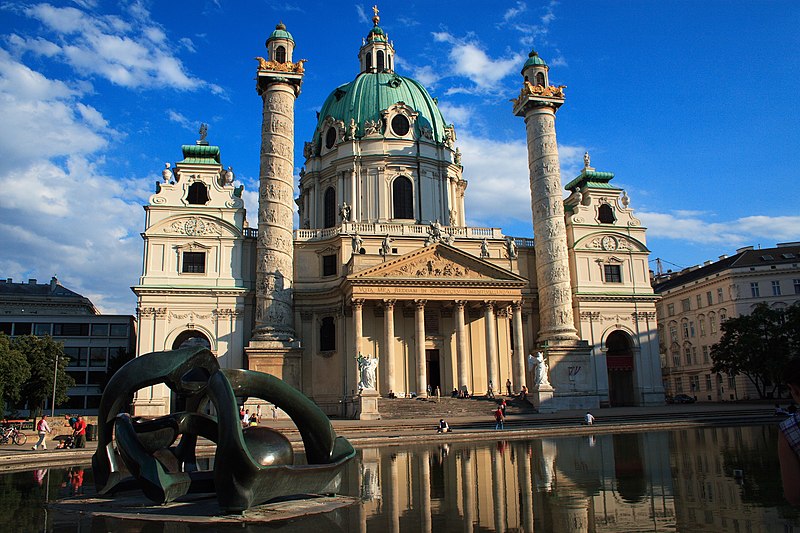
Another one of the most prominent baroque structures in history is located in Vienna, Austria.
This structure, like the San Carlo alle Quattro Fontane, is dedicated to Saint Charles Borromeo, who served as the archbishop of Milan during the late 16th century and was also a prominent leader in the Catholic church’s movement to curb Protestant Reformation efforts throughout the world.
This building is called the Karlskirche, which in German means Saint Charles Church.
Also Read: Famous Rococo Buildings
Work began on the project in the early 1700’s after Holy Roman Emperor Charles VI pledged to build a church for Borromeo, who the emperor himself was named after.
Construction started in 1716 and the project would be completed just over two decades later in 1737. The structure sits on the southern side of Vienna along the Karlsplatz square, overlooking the Danube River.
3. Palace of Versailles
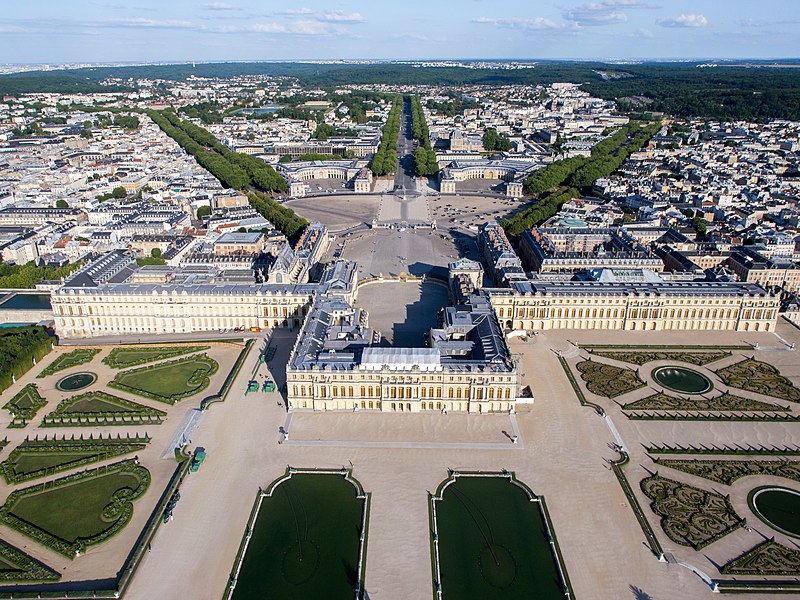
Another one of the most notable structures in the world that was done according to the baroque architectural style is the Palace of Versailles.
This extravagant building is one of the most elaborate and beautifully-designed structures anywhere in the world, according to many architectural critics. It was designed by Louis Le Vau, who is recognized as one of the leading architects from the baroque movement.
The structure began to be constructed in the early 17th century under the guidance of Le Vau, but it was François d’Orbay who carried on the project to completion.
Much of d’Orbay’s work focused on the interior of the palace, which features vast halls filled with golden objects, chandeliers and other items that were a testament to the wealth of the French monarchy. The Palace of Versailles was finished in 1634.
4. Il Gesu
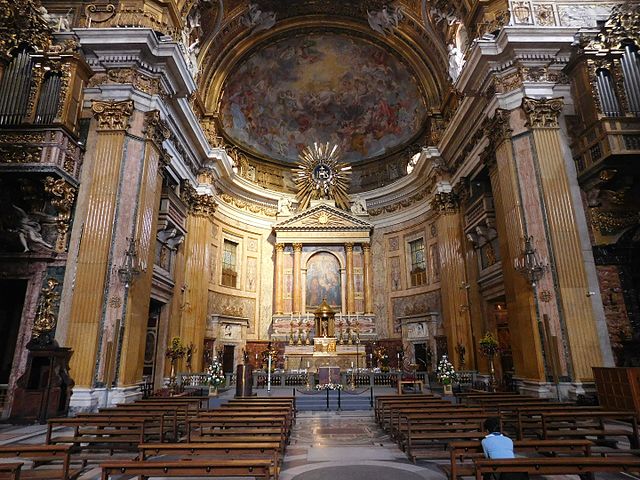
Il Gesu is one of the most highly-regarded religious structures in the world as it is the home-church of the followers of the Society of Jesus, which is more commonly known as the Jesuits.
The Il Gesu, or Church of the Gesù, is a building that was done with many of the usual highlights of the baroque style, which emphasized the difference between the appearance of objects and buildings in certain levels of light and darkness.
The church of Il Gesu was mostly designed by Giacomo Barozzi da Vignola, who is considered to be one of the most distinguished architects from the baroque period that was in full swing at the time of the church’s construction.
Work began on the project in 1568 and the building was designed in various phases under architects from the late 16th and early 17th centuries.
Giovanni Tristano took over the project in 1571 after the death of Vignola, but he was succeeded by Giovanni de Rosis and later Giacomo della Porta.
5. St. Paul’s Cathedral
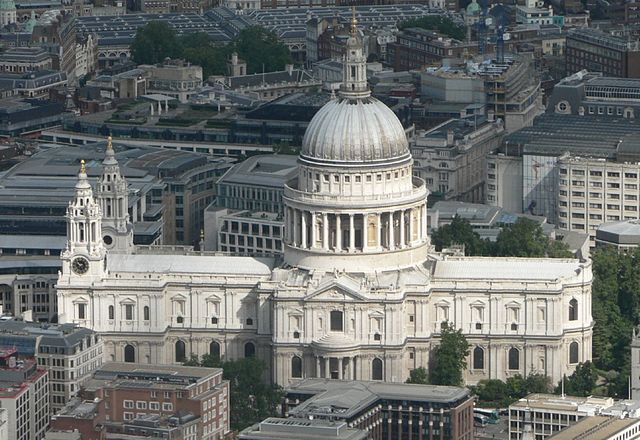
One of the most well-known churches throughout England and a local landmark for the city of London is St. Paul’s Cathedral.
This building is designed with the Greek-cross architectural layout and much of the exterior and interior of St. Paul’s Cathedral includes items that were done at the height of the baroque period.
The church is located on Ludgate Hill, which is the highest point in the city of London.
St. Paul’s Cathedral was designed by Sir Christopher Wren, who is remembered as one of the most celebrated architects in British history who very often produced works that were done according to the baroque style.
The building was first under construction in 1675 and the project would take a full quarter-century before it was finished in 1710.
The interior of St. Paul’s Cathedral is one of the most magnificent churches in the British Isles and is often the site of official state ceremonies, as well as high-profile weddings, funerals and religious ceremonies.
6. Les Invalides
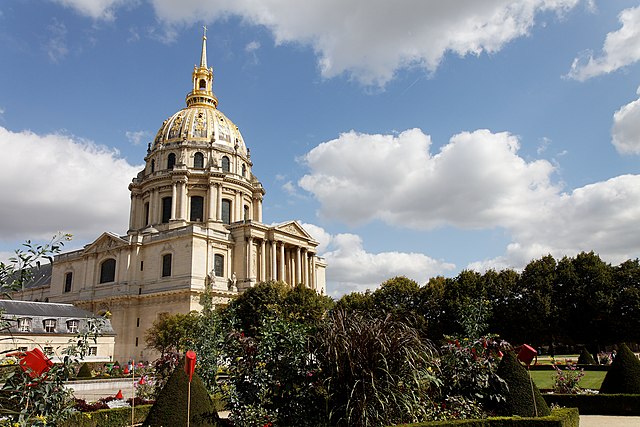
Les Invalides is one of the most historically-rich buildings in Paris that sits in the 7th arrondissement of the capital city of France.
The structure is also known as Hôtel national des Invalides and has served a variety of purposes since it was constructed during the early 18th century.
Also Read: 18th Century Architects
Les Invalides was designed by Jules Hardouin-Mansart, who took a great deal of inspiration from his great uncle, François Mansart’s work.
Construction began on the building in 1671 and it was finally finished in 1706. Throughout the centuries since it was built, Les Invalides was used as a military hospital, as well as a number of other functions that date back to the era just before the French Revolution.
7. Zwinger (Dresden)
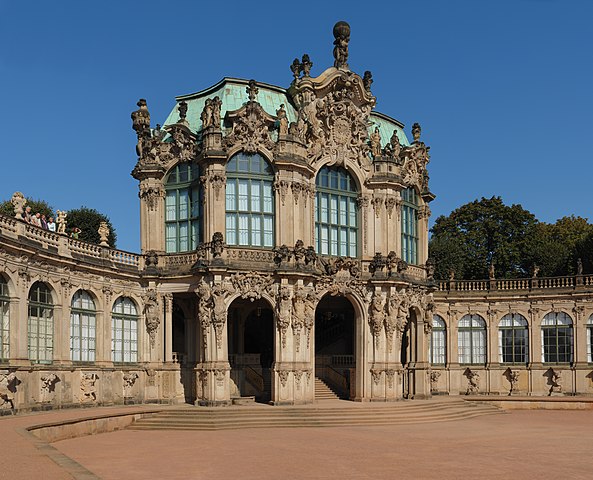
The Zwinger, which is a prominent structure in Dresden, Germany is regarded as one of the most notable outdoor landscaping structures that involves the baroque architectural style.
The Zwinger is a word that was used in old Germanic language to describe a fortress part between the outer and inner fortress walls.
The structure was designed by Matthäus Daniel Pöppelmann, a prominent German architect who is credited with rebuilding the city after the devastating fires of 1685.
Construction on the Zwinger (Dresden) began in 1710 at a time when the baroque style was being used across wide portions of Europe.
The structure was finished in 1728 and has also withstood the ravages of the merciless bombing that occurred in the city during World War II. It is one of the most well-known historic landmarks in Dresden today.
8. Cathedral of Santiago de Compostela
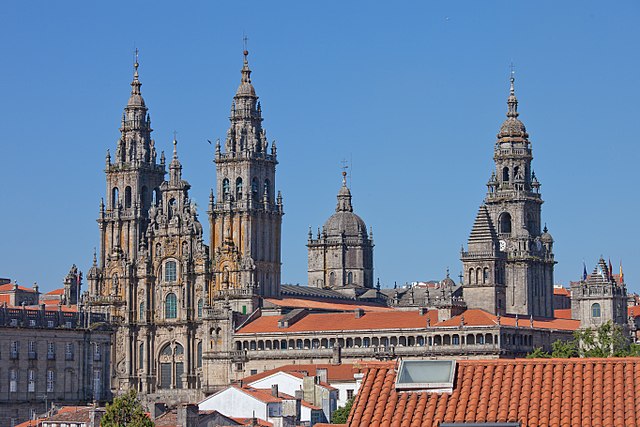
Another one of the most notable baroque-style buildings in the world is the Cathedral of Santiago de Compostela, which is located in Santiago de Compostela, Spain.
It is one of the most highly-regarded sites in the Cathlic faith as the building is believed to be the resting place of the remains of Saint James the Apostle, who is believed to have died in Spain during the 1st century A.D.
The Cathedral of Santiago de Compostela is part of the Metropolitan Archdiocese of Santiago de Compostela.
It was built on the site of an already-existing ancient Christian church, but the building as it exists today was first under construction beginning in the early 18th century.
The building has been remodeled and modified many times throughout history, but the exterior was finished in 1740 under the guidance of Fernando de Casas Novoa.
9. St. Peter’s Basilica
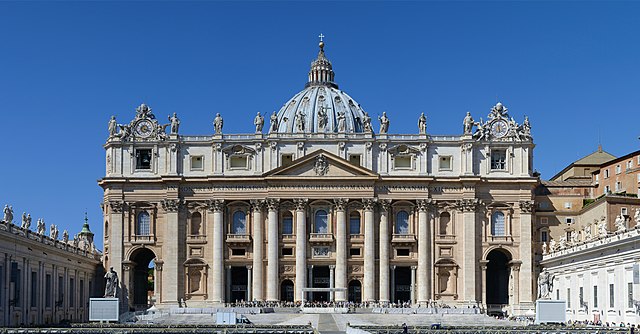
St. Peter’s Basilica is recognized as one of the most prominent buildings in the Catholic faith. It sits in the middle of Vatican City, located in the heart of Rome, Italy and is one of the most-visited sites in the world today.
The church was designed by a number of different architects, dating back to 1506 when construction first began.
The main structure was completed in 1626, which was a time when the baroque movement was gaining considerable amounts of popularity throughout Italy.
St. Peter’s Basilica is dedicated to Saint Peter, who is believed to be the first great leader of the Catholic church and his remains are said to be held in a burial chamber in the church.
10. Schönbrunn Palace
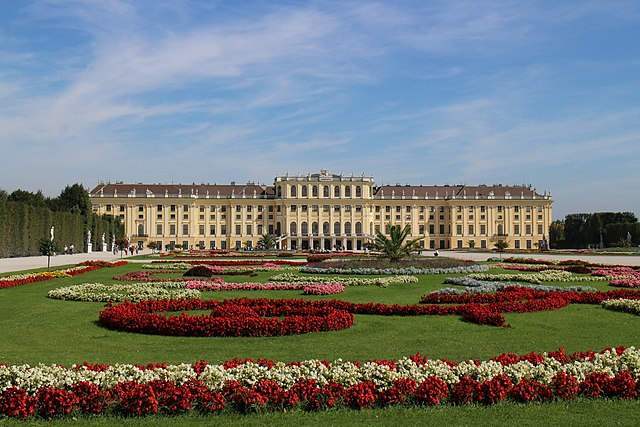
Another one of the most famous baroque architecture buildings is located in Vienna, Austria, which is a city where the movement enjoyed considerable popularity during the early 17th and 18th centuries.
The Schönbrunn Palace is located in the heart of Vienna and is one of the most notable landmarks in the historic city.
This sprawling palace features a staggering number of individual rooms that is said to be as high as 1,441.
The Schönbrunn Palace was designed by Johann Bernhard Fischer von Erlach and was completed in the mid-17th century.

